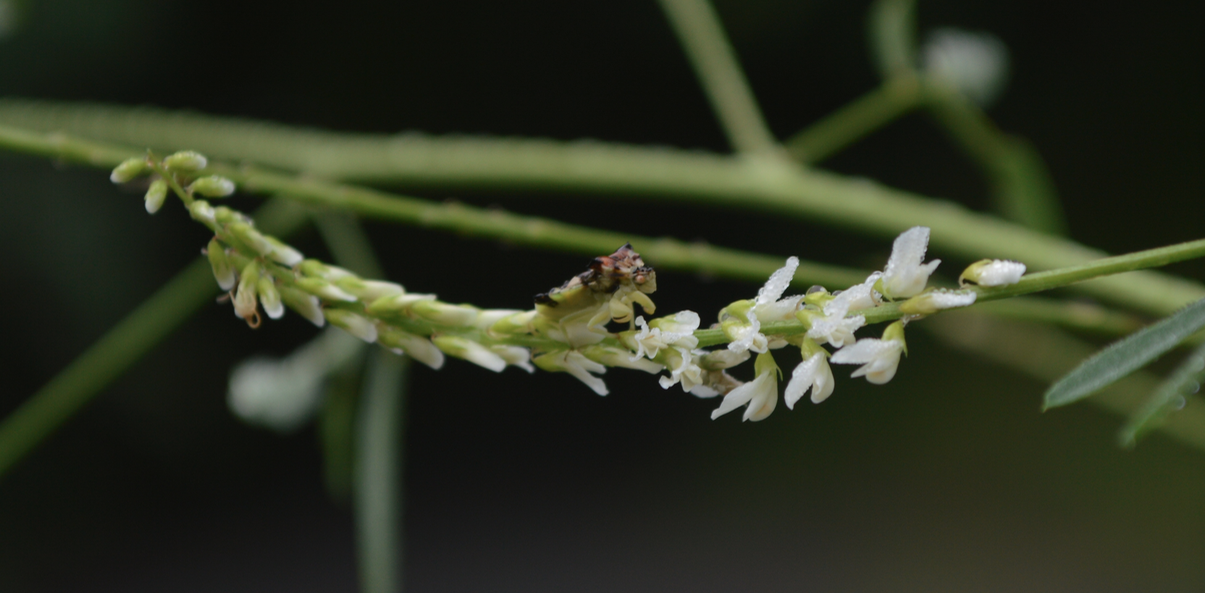If you don’t know where to look for them, you might not even find them. Unless, that is, you are just swinging a net wildly through the bushes. Ambush bugs, a personal favourite, are maestros of camouflage. They’re predatory, as well, so instead of fleeing from movement, they lie in wait for it. This results in some great pictures:

This bug, probably Phymata americana, disguises itself as a flower, waiting for prey that can be much larger than it. Probably one of the best photos I’ve ever taken.
Parker Smale – Personal Collection
Coloured to blend in with the plants they live on, you can find many types of ambush bugs even within one field or garden, commonly basking in the summer sun on Queen Anne’s Lace or goldenrod. Here, they wait for their prey, which can be many times their size. Distinctive in both their looks and their behaviour, there has been a surprising amount of controversy surrounding their classification – should they be considered their own family or not?
The Difference a Letter Can Make
Previously classified as their own family within Heteroptera (Hemiptera), Phymatidae, these bugs have recently been thrown into the family Reduviidae as a subfamily (Phymatinae). If you have seen other Reduviidae specimens, you’ll note that the picture above, a specimen from the genus Phymata, does not look all that much like the typical Higher Reduviidae specimen: its distinctive raptorial front legs and wide abdomen set it apart from the crowd. However, multiple studies, both morphological and molecular, have suggested that Phymatinae is a sub-family within Reduviidae. For more information (or if you aren’t quite sold yet), check out Christiane Weirauch’s paper on morphology within Reduviidae (including Phymatinae) or a paper she co-authored with Wei Song Hwang looking at the family’s molecular data (linked at the bottom of this post). They are both somewhat dense and can be hard for the amateur entomologist to understand, but there are lots of nice pictures even if you don’t know what the words mean!
Definitions
Raptorial legs – Legs modified for grasping. Think praying mantis!
Morphological – Comparing forms and physical features
Molecular – Testing DNA to predict potential phylogenetic trees
Phylogenetic trees – Maps of evolutionary relationships
Much of the reason that species within the genus Phymata don’t look like many other Reduviidae specimens is because the most recent common ancestor between the Phymatine Complex (a group containing Hammacerinae, Centrocnemidinae, Holoptilinae, and, of course, Phymatinae) and Higher Reduviidae (all other Reduviidae) is estimated to have existed more than 150 million years ago! After this, the Phymatine Complex diversified very quickly, with the sub-family Phymatinae appearing more than 15 million years before the first major speciation event within the Higher Reduviidae group.
Looking at some non-Phymatinae species within the Phymatine Complex, it is easier to see the resemblance to Higher Reduviidae. The sub-families Hammacerinae and Centrocnemidinae, in particular, look quite similar to your typical Higher Reduviidae specimen. Even within Phymatinae, non-Phymata species also resemble more classic Reduviidae specimens. Macrocephela still has raptorial front legs, but its head and body are more Reduviidae-like. Carcinocora has a very similar head-shape to Higher Reduviidae, but with even weirder front legs that have been modified to become pincers.
Above are pictures of various Reduviidae specimens. The first is a Higher Reduviidae specimen, while the other two are from the Phymatine Complex. Note the slender body of the HR compared to the P. It also has longer antennae and non-raptorial front legs. Our friend on the far right is one of the Carcinocora that we talked about above. This species has an abdomen that is as wide as species from Phymata, and is covered in spines.
A.S. Packard – Figure 71 – Entomology for Beginners (1888), p83 – Public Domain (PD)
H.T. Fernando – Figure 170 – Applied Entomology (1866), p182 – PD
S.F. Harmer & A.E. Shipley – Fig 267 – The Cambridge Natural History (1895), p554 – PD
And, of course, morphology is not the only variable we need to take into account when trying to determine the relationship between two organisms (or two groups of organisms). Relationships found through DNA evidence are generally the most compelling, even when two groups don’t necessarily look similar. When we combine all the evidence together, it seems to point in the same direction – it should be Phymatinae, not Phymatidae.
The question of family or sub-family, though, is not the only identification controversy when it comes to these charismatic insects. Next time, we’ll talk about identification issues on the species-level when it comes to these wonderful bugs.
Resources and further reading:




